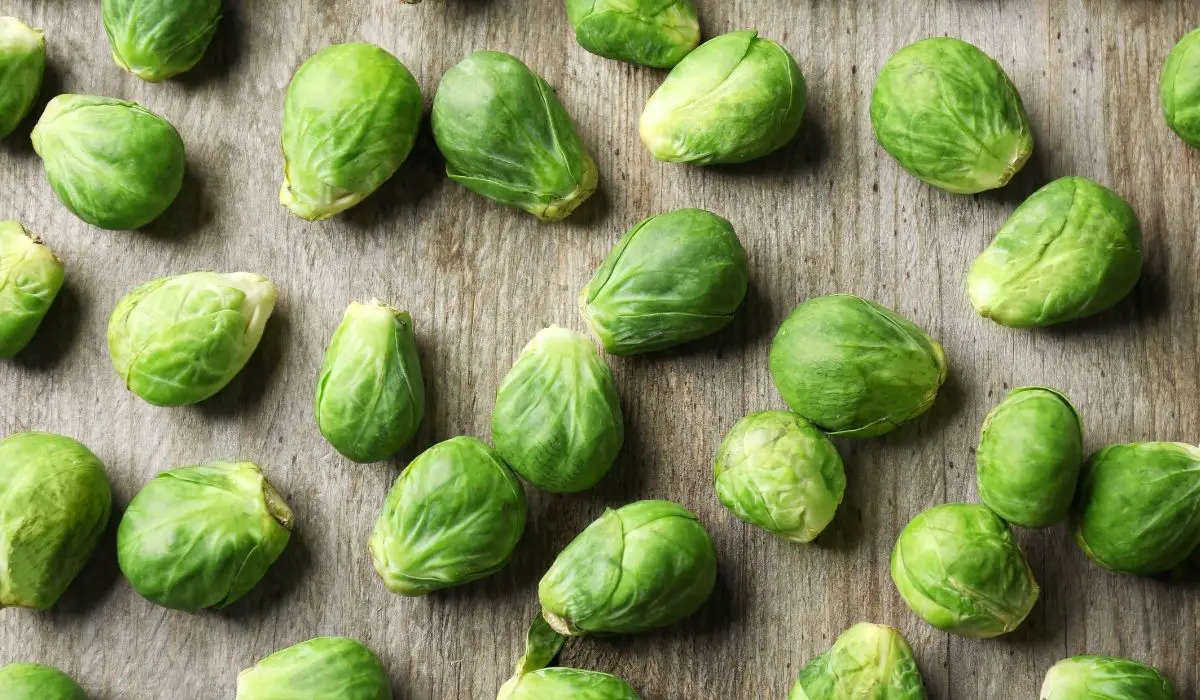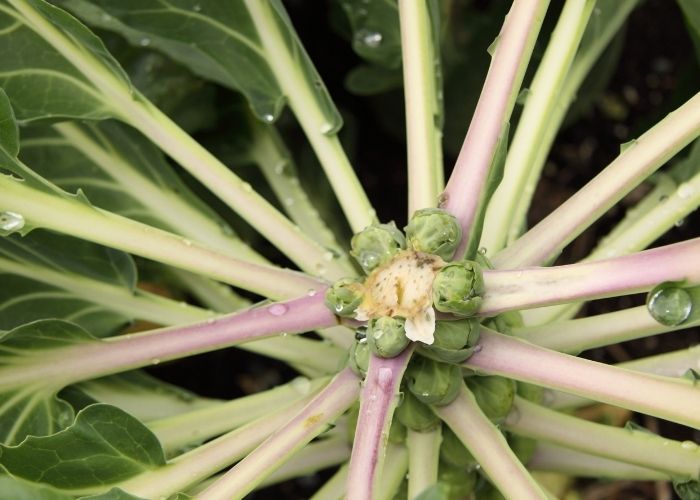Last Updated on January 19, 2023 by Urska
In this article, we will look at Brussel sprouts growing season to know and prepare for the planting time before it approaches.
Brussel sprouts date back to the ancient days when they were consumed in many homes. They are named after Brussels in Belgium, where they have been enjoyed since the 14th century.
Being part of the cabbage family, Brussels can grow in vegetable gardens as long as you have patience. They are slow-growing plants that require a longer growing season.
Brussels is a much-loved vegetable that thrives in winter and is a traditional festive favorite. They get their best flavor from being frosted. This is one of the favorite vegetables you will find across America in the farmers’ market or grocery stores.
Bursting with goodness, these hardy vegetables are brilliant crops to plant in your Winter garden. They are one of the easiest and most rewarding vegetables to grow in your small garden.
Brussel Sprouts Growing Season
Brazil plants are commonly visible during the winter season. To prepare for the growing season, here are a few things you need to put into consideration.
Prepare Your Garden
Brussel sprouts are the perfect crop for areas with cold winters and low temperatures. Lower temperatures generally result in a bumper yield of the harvest of the space they take up in the garden.
The first thing to prepare is the soil—Brussel sprouts like slightly acidic to neutral soil that is fertile, well-drained, and moist. The soil should have plenty of organic matter to enrich it and make it fertile enough to grow Brussels. The soil pH should be between 6 to 5 and 7. An excellent organic matter or old compost manure will help maintain Brussels’ moisture for their intense growth.
The Brussels soil should be firm but not too compacted to allow proper growth.
The Planting Process
Just like building a house needs a good foundation is the key to success in your garden. The better the soil, the better your plants will grow. Start your Brussels with old or organic matter like old compost manure, then add a layer of fertilizer if you want to and plant your Brussels.
The best time to plant is early in the morning or late in the afternoon so that the plants are not exposed to the hot sun straight away. Constantly water your plants well before and after planting.
So you are seeds in a full sun-sheltered position and space them at least 50 cm to 70 cm apart to ensure the crops can fully mature and not fight for space. Urdu your fertilizer and water immediately you plant, or you can opt to fertilize them later.
If you had previously planted Brussel sprouts or any variety of brassica on the same spot, do not plant new Brussels. Pests and diseases can linger long enough in the soil and attack your crops.
How To Plant Brussel Sprouts In Garden Beds
- Water your seedlings thoroughly before planting and allow them to drain
- Dig holes approximately twice the depth and width of the root ball of your brassica plant
- Partly fill the hole with compost or organic manure
- Gently loosen the root ball of your brassica plant and position the plant in the center of the hole
- Fill the holes with your organic or compost manure
- Plant your seedling and press your soil gently around the base of the plant to avoid injuring it
- Once you have planted, water them thoroughly
How To Plant Brussels In Containers
- Water your seedlings thoroughly before planting and allow them to drain well
- Partly fill your containers with compost or organic manure
- Gently loosen the root ball of your Brussels plant
- Fill your container with organic or compost manure up to 3 cm from the top
- Tap the container gently on the ground to settle the mix
- Place your soil gently around the base of the plant
- Water your plant well
When To Grow Brussel Sprouts In Its Season
Sow your seeds from early March to early April, starting them early to ensure you get the best crop. Use early mid-season and late cultivars to provide you with a long cropping season.
For an early crop, sow your seeds in a greenhouse or in small pots or modular traits in February so that you can harvest them in August.
Brussels seeds are traditionally started in a separate seedbed rather than on the main vegetable plot. They are then transplanted in early to mid-summer.
Growing Brussel Sprouts In Season
- From mid-May to early June, your young plants are around 10 to 15 cm tall. This is the best time to transplant them to their final growing place.
- Choose a sunny site that is sheltered away from strong wind.
- Before transplanting your seedlings, improve your soil by adding up to two bucketfuls’ of well-rotted manure per square meter and high potassium fertilizer.
- When transplanting your seedlings, space them between 60 cm apart and 75 cm between rows.
- Once you have transplanted your seedlings, water them adequately and keep a consistent watering schedule afterward.
- Water your Brussel plants regularly until they have settled in, repeating every 10 to 14 days.
- In July, apply a top-dressing nitrogen-rich fertilizer or dried poultry manure pellets. Use at least 150 g per square meter of either manual or fertilizer.
- In September, mound soil around the base of your Brussel plant to provide extra support.
Nourishing Your Plants
Once your plants are established, work on feeding them with enough nutrients from the soil as they grow. Add these nutrients using organic manure or fertilizer.
Choose a fertilizer that blends well with your crop; if you grow Brussel sprouts in pots or containers, you also need to feed them with suitable fertilizers.
Be sure to water your Brussel plants properly to ensure no risk of drying or low production. Well-watered plants have a better chance to withstand pests and diseases that attack.
When To Harvest Brussel Sprouts
Early varieties can be harvested from August, with late cultivars harvested in September. Later cultivars have their flavor improved once the sprouts have been frosted.
Start picking the lowest sprouts first when they are the size of a walnut farm and still tightly closed; snap them off with a sharp downward tag but avoid injuring the plant.
Conclusion
Brussel sprouts are a slow-growing but very bountiful crop. Planting them from seeds outdoors requires a very long drawing season to ensure you get a good harvest. Timing is everything when planning to grow Brussel sprouts.
When you harvest your ready Brussel sprouts, you can ferment, can, or freeze them. You can also enjoy them fresh from the garden. If you harvest them after a frost, they are usually sweeter than those that have not gone through a frost.
Read more about When Does Bee Balm Bloom?
Caroline is a gardener who loves to get down to the nitty–gritty of gardening. She proudly proclaims herself as a ‘dirt worshipper‘ and can often be found deep in the garden, covered in soil and singing to her plants. As a self–proclaimed ‘plant whisperer‘, Caroline believes that plants need love and attention just like any other living thing, and she loves to give them both. When she‘s not tending to her garden, you can often find her researching the latest gardening trends, or teaching others how to make their gardens thrive




